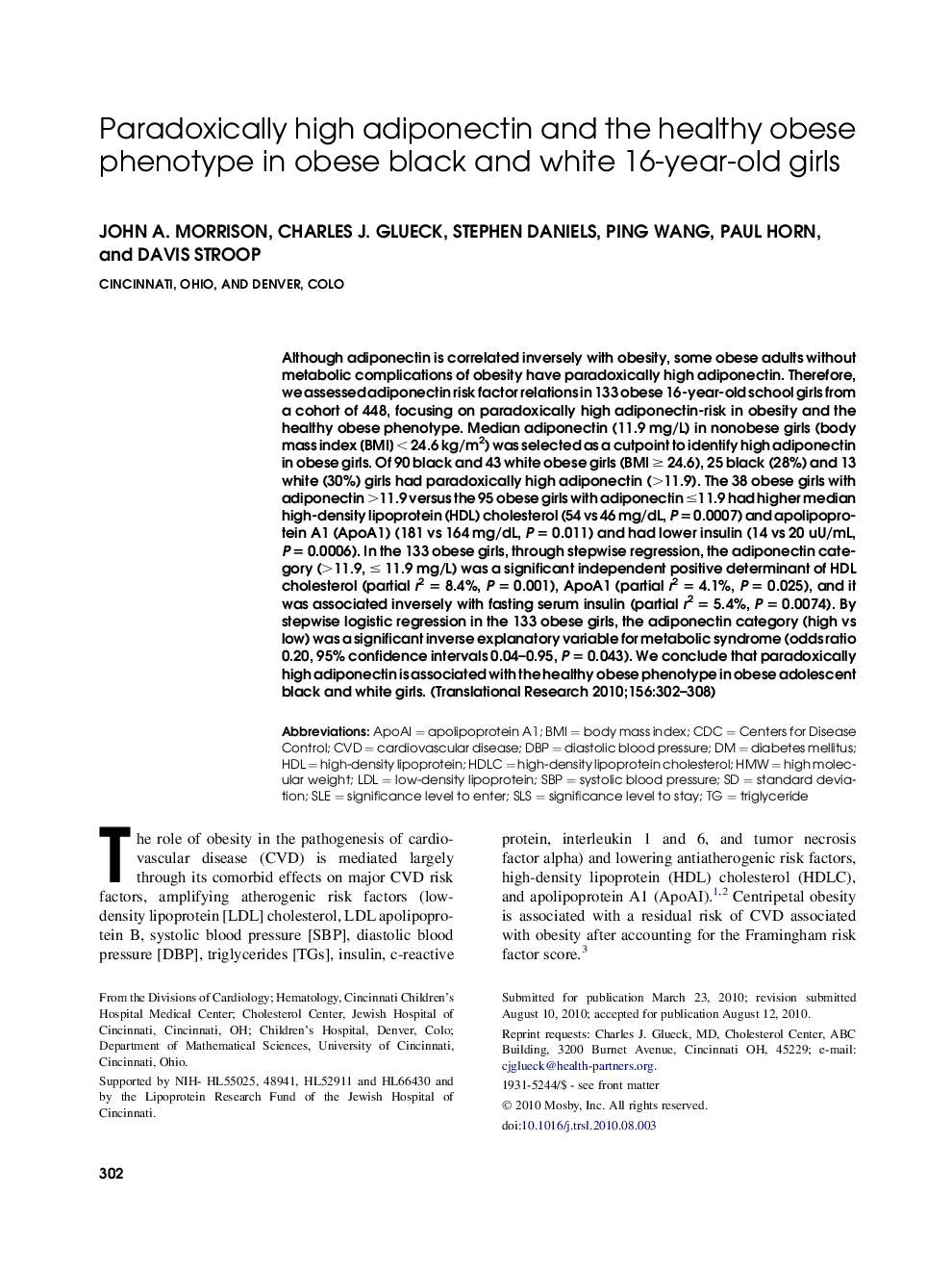| Article ID | Journal | Published Year | Pages | File Type |
|---|---|---|---|---|
| 3840852 | Translational Research | 2010 | 7 Pages |
Abstract
Although adiponectin is correlated inversely with obesity, some obese adults without metabolic complications of obesity have paradoxically high adiponectin. Therefore, we assessed adiponectin risk factor relations in 133 obese 16-year-old school girls from a cohort of 448, focusing on paradoxically high adiponectin-risk in obesity and the healthy obese phenotype. Median adiponectin (11.9 mg/L) in nonobese girls (body mass index [BMI] < 24.6 kg/m2) was selected as a cutpoint to identify high adiponectin in obese girls. Of 90 black and 43 white obese girls (BMI ⥠24.6), 25 black (28%) and 13 white (30%) girls had paradoxically high adiponectin (>11.9). The 38 obese girls with adiponectin >11.9 versus the 95 obese girls with adiponectin â¤11.9 had higher median high-density lipoprotein (HDL) cholesterol (54 vs 46 mg/dL, P = 0.0007) and apolipoprotein A1 (ApoA1) (181 vs 164 mg/dL, P = 0.011) and had lower insulin (14 vs 20 uU/mL, P = 0.0006). In the 133 obese girls, through stepwise regression, the adiponectin category (>11.9, ⤠11.9 mg/L) was a significant independent positive determinant of HDL cholesterol (partial r2 = 8.4%, P = 0.001), ApoA1 (partial r2 = 4.1%, P = 0.025), and it was associated inversely with fasting serum insulin (partial r2 = 5.4%, P = 0.0074). By stepwise logistic regression in the 133 obese girls, the adiponectin category (high vs low) was a significant inverse explanatory variable for metabolic syndrome (odds ratio 0.20, 95% confidence intervals 0.04-0.95, P = 0.043). We conclude that paradoxically high adiponectin is associated with the healthy obese phenotype in obese adolescent black and white girls.
Keywords
CDCApoAIHDLCHMWHDLSLSDBPSBPhigh-density lipoproteinApolipoprotein A1standard deviationcardiovascular diseasetriglycerideDiabetes mellitusCVDbody mass indexBMIdiastolic blood pressuresystolic blood pressureSLEhigh-density lipoprotein cholesterolLow-density lipoproteinLDLCenters for Disease Controlhigh molecular weight
Related Topics
Health Sciences
Medicine and Dentistry
Medicine and Dentistry (General)
Authors
John A. Morrison, Charles J. Glueck, Stephen Daniels, Ping Wang, Paul Horn, Davis Stroop,
